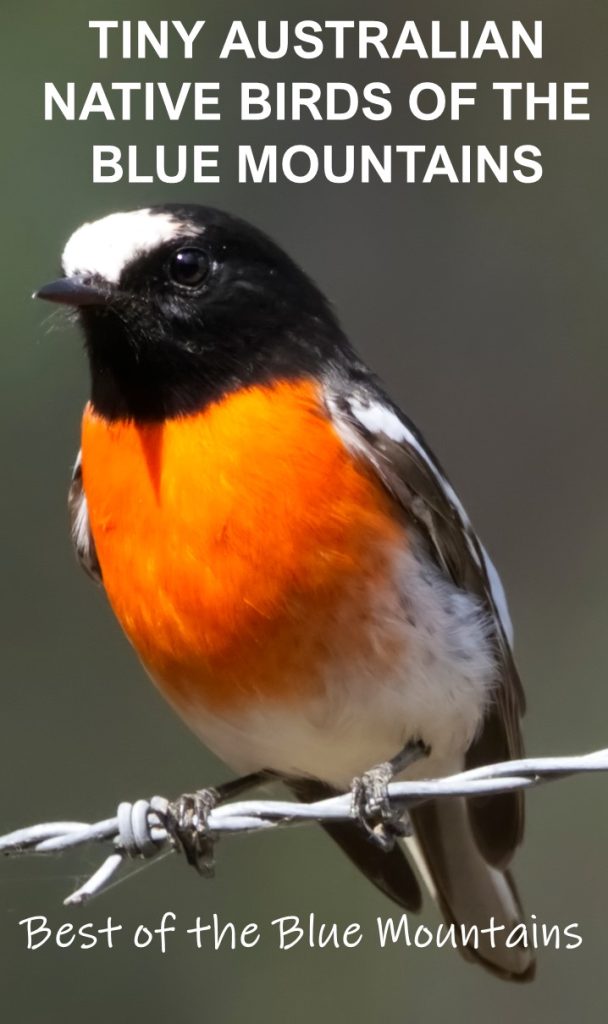While it is pretty easy to spot many of the larger and common bird species that inhabit the Blue Mountains, if you keep your eyes peeled there are plenty of the tiny Australian native birds to be seen also. I seem to spend so much time photographing these that I thought I’d just put a post together. Read on to find out where to go looking if you want to see some!
This post contains affiliate links. Making a purchase through one of these links earns a small commission at no additional cost to you and is a great way of showing your support to this site.
How to find tiny birds
While you are likely to see a number of species if you head out on a bushwalk, if you are interested in finding a particular species it is worthwhile downloading ebird. This is an app in which bird watchers and photographers log their sightings, and you can use the explore function to see what species have been recorded in a particular location. It is also worth joining local bird pages on social media where locals will often post sightings and photos of species they have come across.
If bird watching and identification is a pursuit that interests you, it may be worth investing in a Field Guide for Australian Birds. I can recommend the Simpson and Day version, which is a hugely useful resource for me in my bird rescuing activities. Depending on the level of your interest you may wish to invest in a set of binoculars. I use my long lens for spotting instead but Camera House have a number of options you can check out for your budget.
Tiny Australian Native Birds of the Blue Mountains
Fairy-Wrens
These two species of Fairy-Wren have overlapping territories, and studies have found they know specific individuals and will cooperate in foraging and defending their territory.
Superb Fairy-Wrens
(Malurus cyaneus)
These pretty little birds are a challenge to photograph once you find them given they are so tiny and fast! As with many creatures in nature the males are the colourful ones, with a bright blue head, while the females are quite plain. The males exhibit their bright blue feathers in breeding season, however males over 4 years old will retain their blue colouring year round. So if you see a blue one in winter you know it is an older bird.
I love that Fairy-wrens always look like they have a grumpy face and are scowling at you!
As with all Fairy-wrens these guys like low, heathy undergrowth where they have lots of places to hide. Anywhere you see stretches of this type of foliage listen out for the little tweets of the wrens.
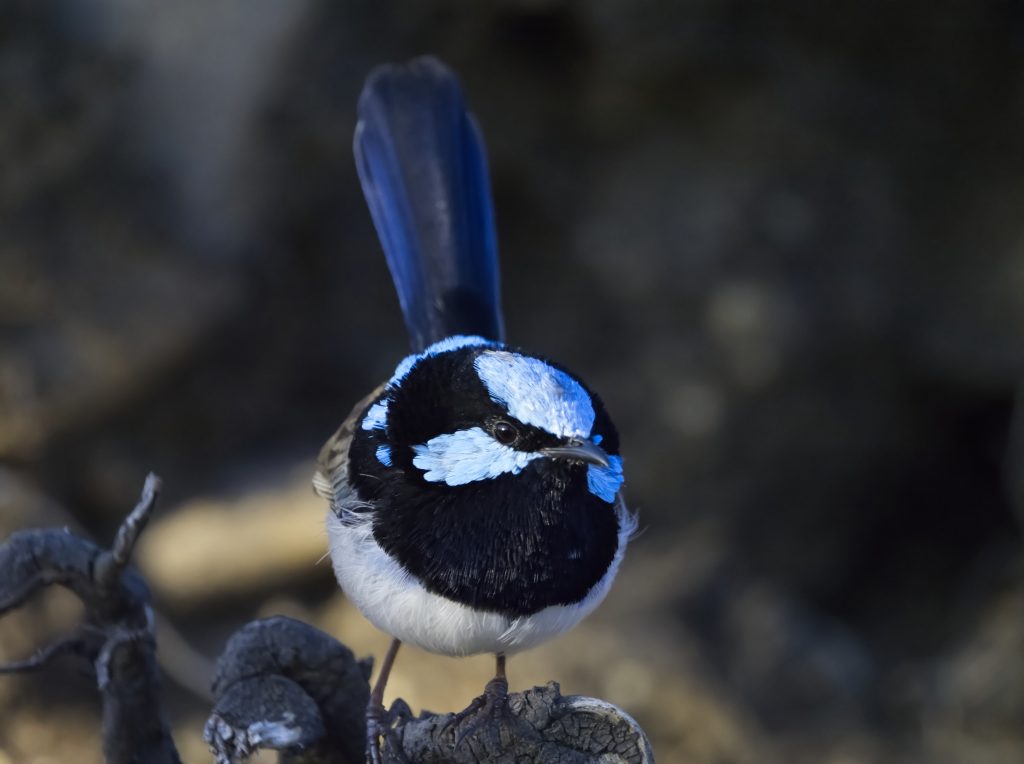
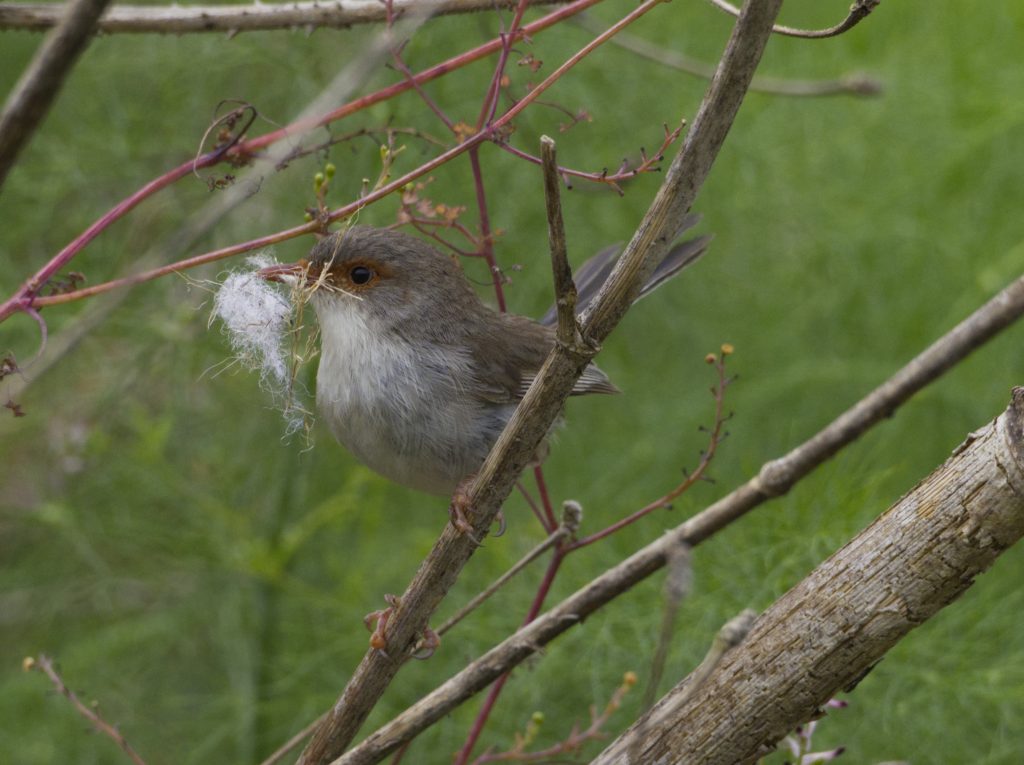
Where to find them: While I’m sure there are many spots in the Blue Mountains to see Superb Fairy-wrens, I’ve personally seen a lot of them in Emu Green Reserve, which is one of my favourite photography locations in the Blue Mountains. You can find this reserve at the end of Russell Street in Emu Heights. I have also seen them on the track to Blue Gum Swamp which can be found at the end of Whitecross Road Winmalee, and plenty at near the river at Yarramundi Reserve on Springwood Road.
Variegated Fairy-Wren
(Malurus lamberti)
Another splash of colour you may spot in the bush belongs to the male Variegated Fairy-Wren. At a quick glance it might be easy to mistake these for a Superb Fairy-Wren due to their shared blue plumage, however the male Variegated has a rust red colour on its back.
I’m still on a mission to catch a better shot of these guys, but was lucky enough to get this male in flight catching lunch.
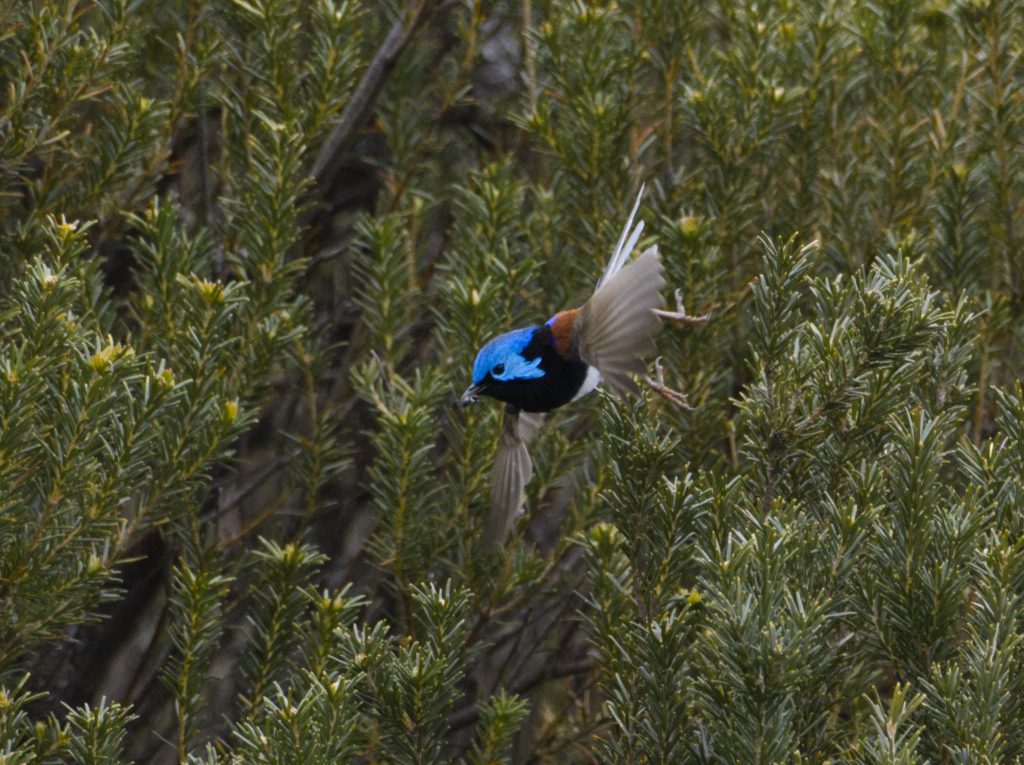
The female Variegated Fairy-wrens are close in appearance to the female Superb Fairy-wrens at a quick glance, however if you get a chance to catch a glimpse of their tail you may see the blue tinge which isn’t present in the NSW residing Superbs.
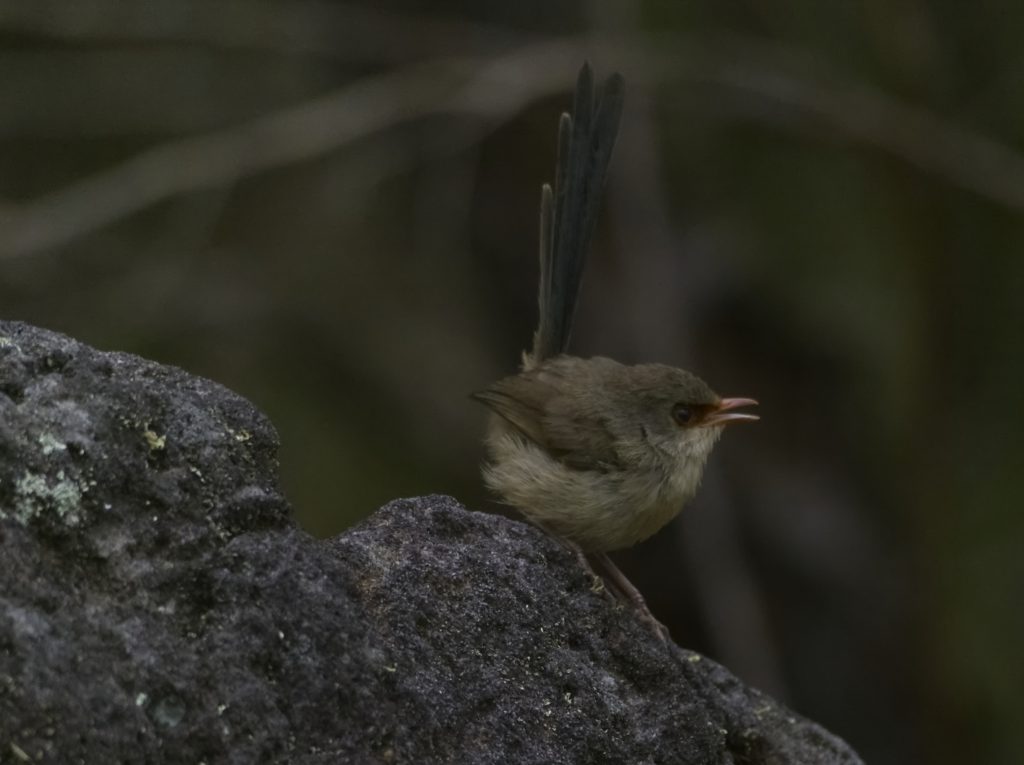
Where to find them: I’ve found these guys on the Blue Gum Swamp track, in particular in the heath and ferns found along the track to the Grotto, and on the Little Switzerland track, which can be found starting from Lincolns Rock carpark in Wentworth Falls.
Robins
Eastern Yellow Robin
(Eopsaltria australis)
A tiny splash of colour darting through the bush, the Eastern Yellow Robin is common in the Blue Mountains. In some locations they have been part of a research project and are wearing leg tags as a result. They will live in a range of habitats, including rainforests, woodland and parks. The male and female look similar in colouring, but the female is smaller in size.
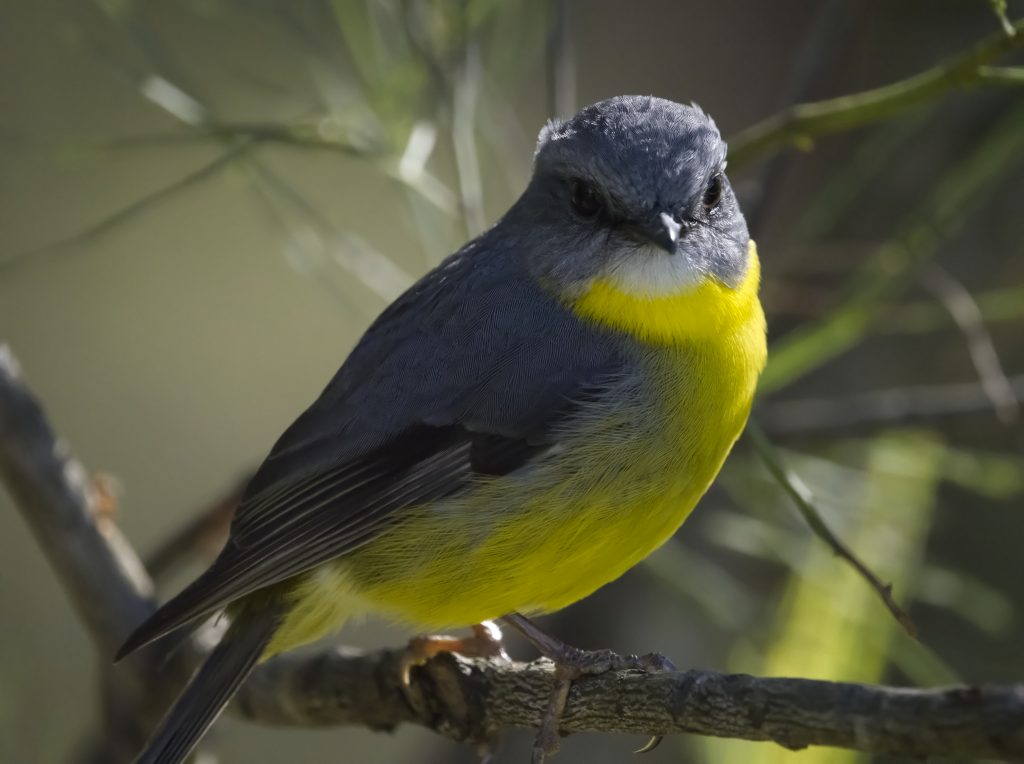
Where to find them: While you’ll see these throughout the mountains I’ve seen these Robin’s on the track to Wentworth Falls, Woodford Dam, Minni Ha Ha Reserve, Sassafras Gully, West Glenbrook Reserve and Blue Gum Swamp. The Robins in the Blue Gum Swamp territory are wearing leg tags.
Flame Robin
(Petroica pheonicea)
Commonly confused with the Scarlet Robin, which has a larger patch of white above the beak, the Flame Robin tends to inhabit forests and woodlands, moving lower in winter. They are sexually dimorphic, the female lacking the bright orange colouring of the male.
I captured this shot in the Snowy Mountains, but these Robins are also found throughout the Blue Mountains.
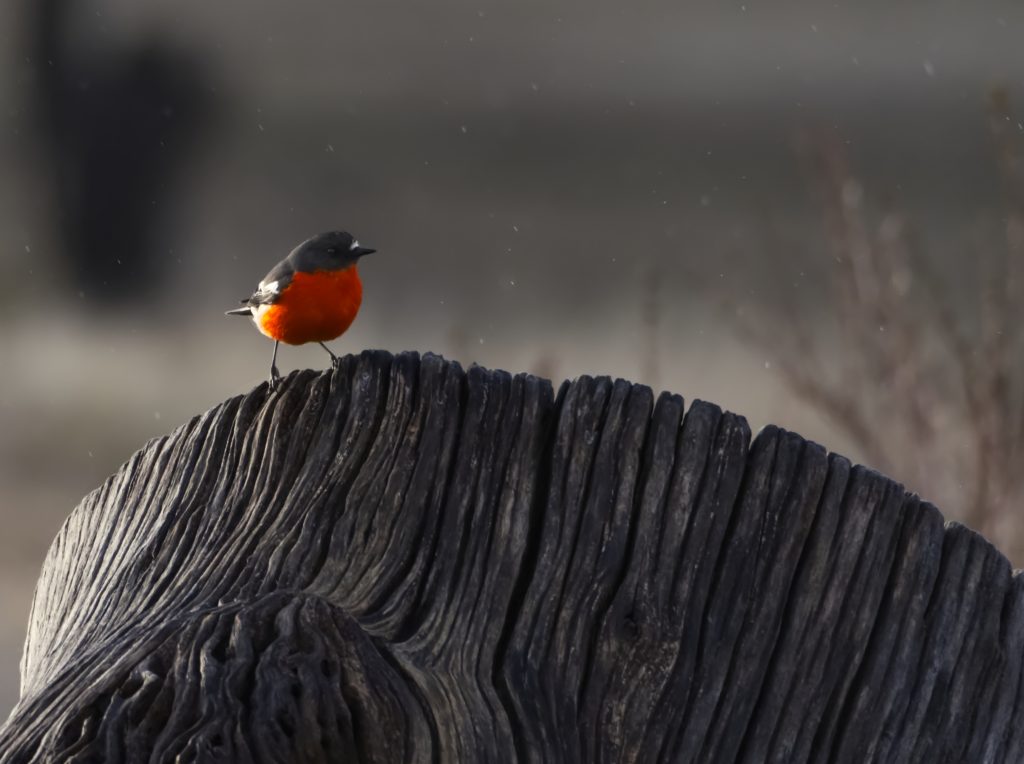
Where to find them: Sightings of Flame Robins have been recorded on the Shipley Plateau in Blackheath, Michael Eades Reserve in North Katoomba, Mount York, Mount Banks and on the Asgard Swamp track.
Scarlet Robin
(Petroica boodang)
Also preferring forest and woodland habitats, the Scarlet Robin is sexually dimorphic. The males have a black head and neck, while the females is brown, and their chest is more of an orange colour.
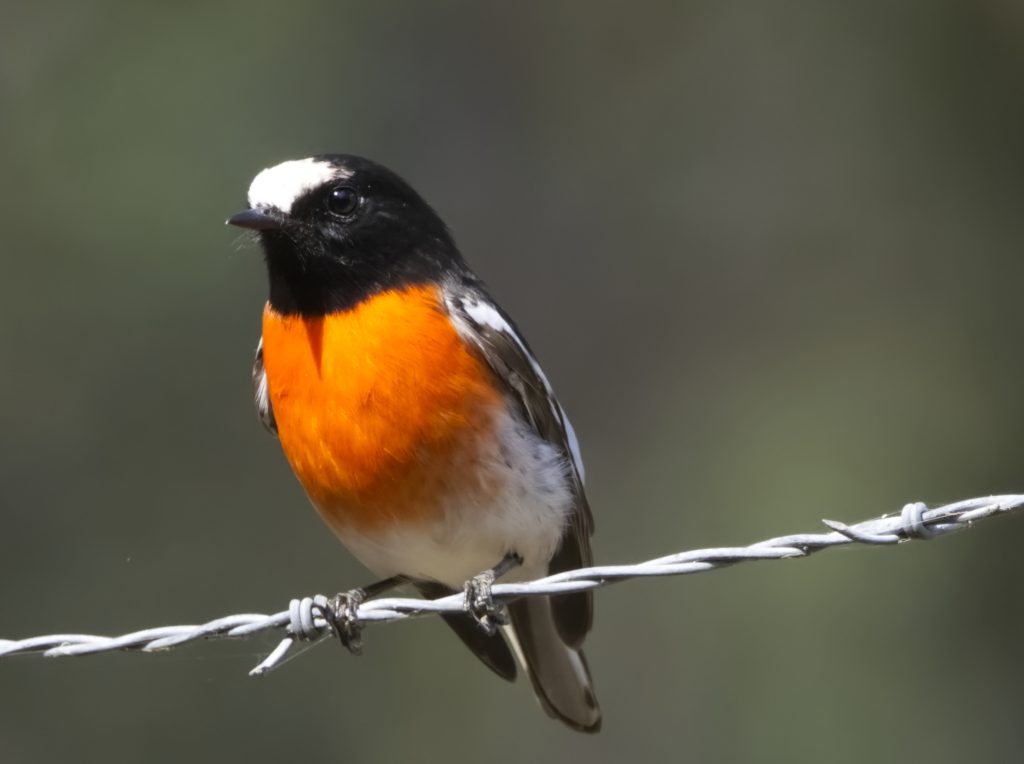
Where to find them: I went to Megalong Valley in search of these after seeing images shared in the local bird group on Facebook. After chasing them through the trees for a while and not getting a good shot I noticed that this bird was consistently going back to this barbed wire fence and I positioned myself to wait. I was eventually rewarded!
Rose Robin
(Petroica rosea)
These little ones created quite the stir in the local Facebook groups when sightings started popping up in the mountains, sending a number of the local bird photographers, myself included naturally, out searching for them.
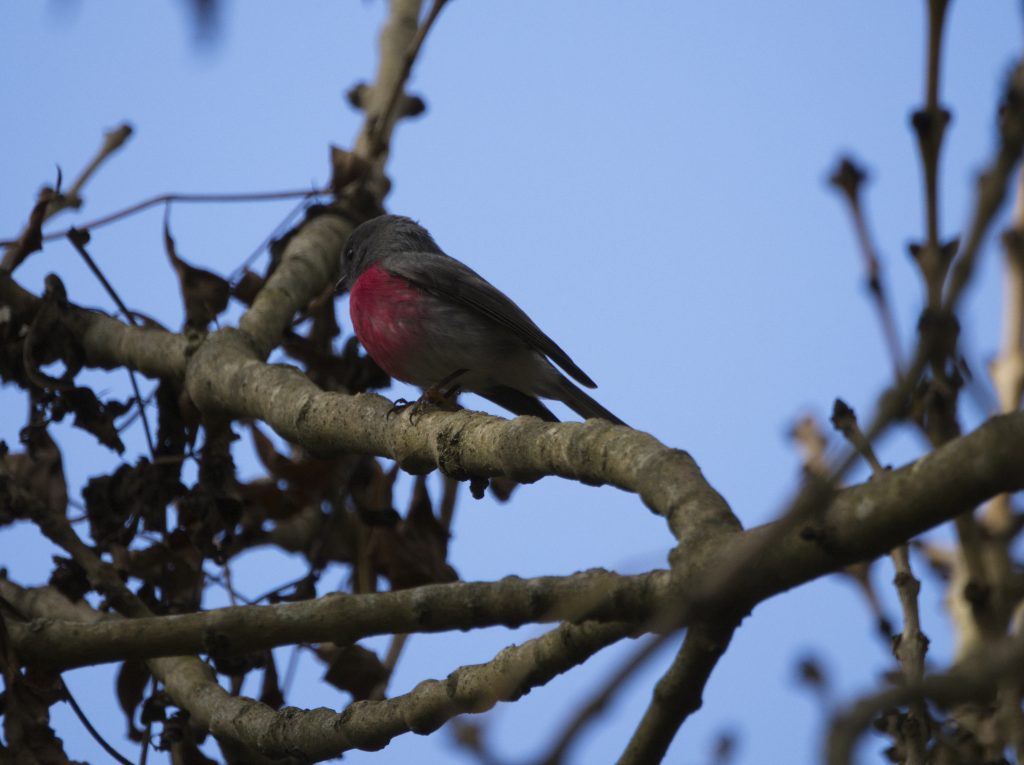
Where to find them: While I know there have been sightings around Glenbrook Lagoon and in Springwood, I have personally seen them around the carpark of Shaw’s Creek Aboriginal Place, and the beginning of West Glenbrook Reserve where I captured this image.
Thornbills
These little birds can also be found flitting around Blue Mountains gardens making their distinctive chatter, so you may be lucky enough to see them closer to civilisation.
Brown Thornbill
(Acanthiza pusilla)
The most common of the Thornbills, these birds are a common sighting in gardens. I’ve had a pair move into mine just this year! Like a number of the tiny birds, they prefer dense, shrubby environments which offer them cover and shelter, which means they can be impacted by fire burning through the ground cover.
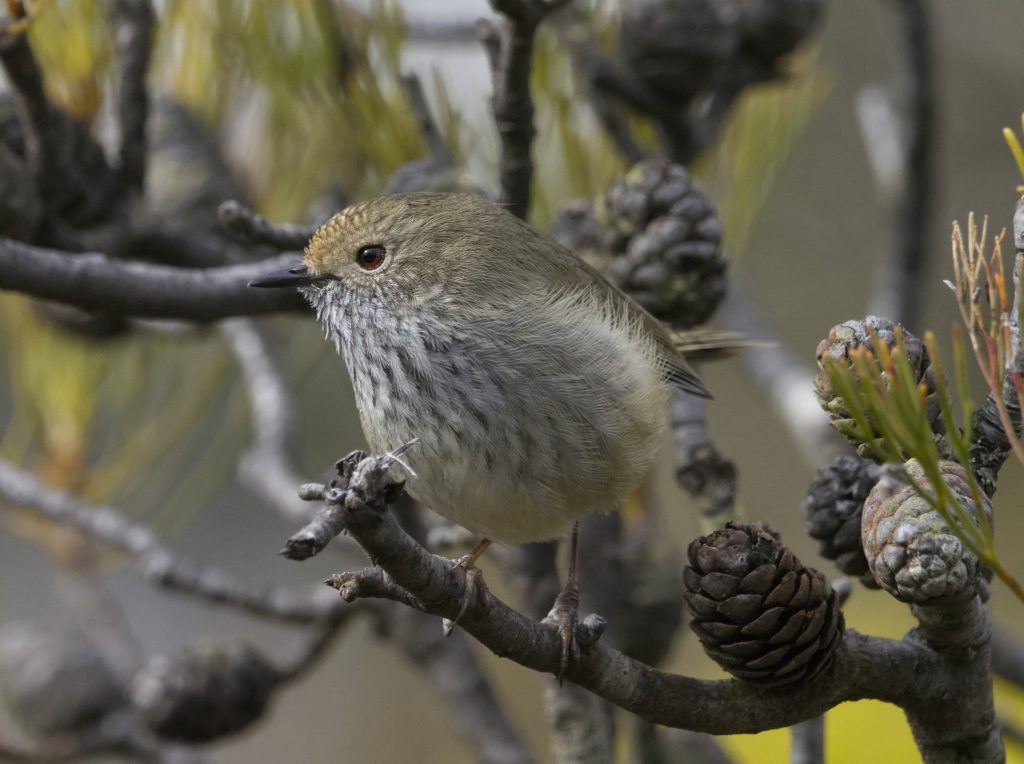
Where to find them: I’ve seen these little birds on a number of tracks, including Blue Gum Swamp, Little Switzerland trail and Woodford Dam fire trail. And of course keep an ear out in the garden and you might be lucky enough to catch them flitting through the branches!
Yellow Thornbill
(Acanthiza nana)
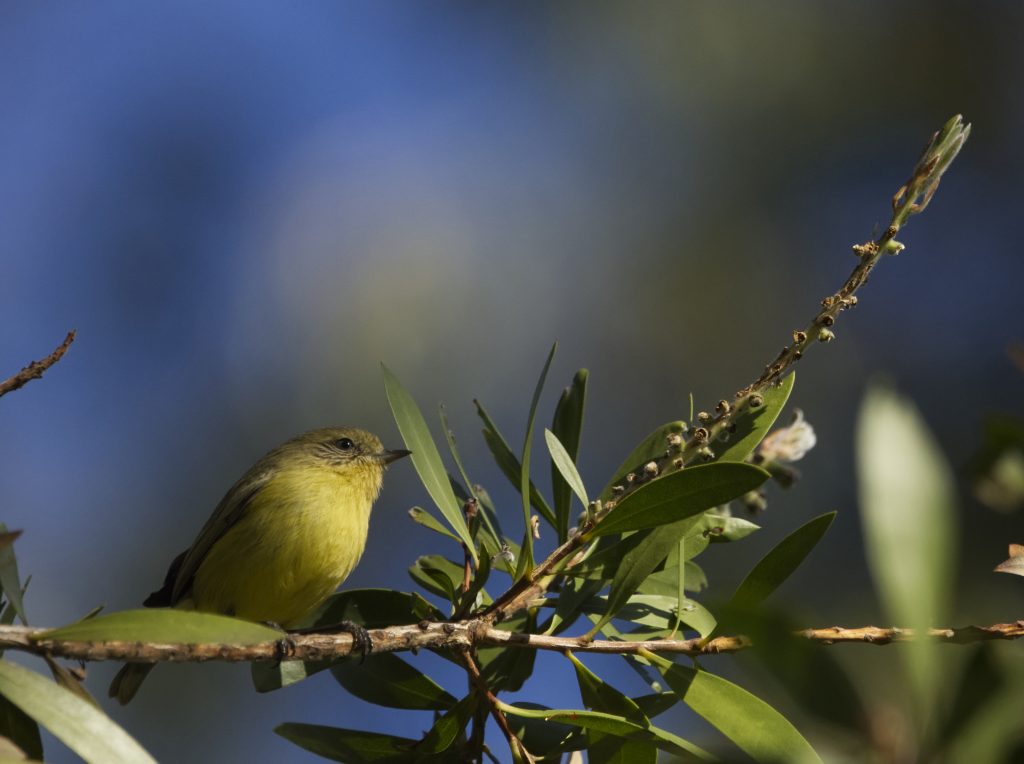
I photographed this one just a few hundred metres from my home in Springwood, but you might also find them at Glenbrook Lagoon, Emu Green Reserve and Yarramundi.
Striated Thornbill
(Acanthiza lineata)
Often mistaken for the Brown Thornbill, the Striated Thornbill is distinguished by its spotted cap. This is a young bird, which will develop more streaking on its underside as it ages. It tends to be found in forests and woodlands, leaning towards those full of Eucalyptus, and occasionally is seen in gardens.
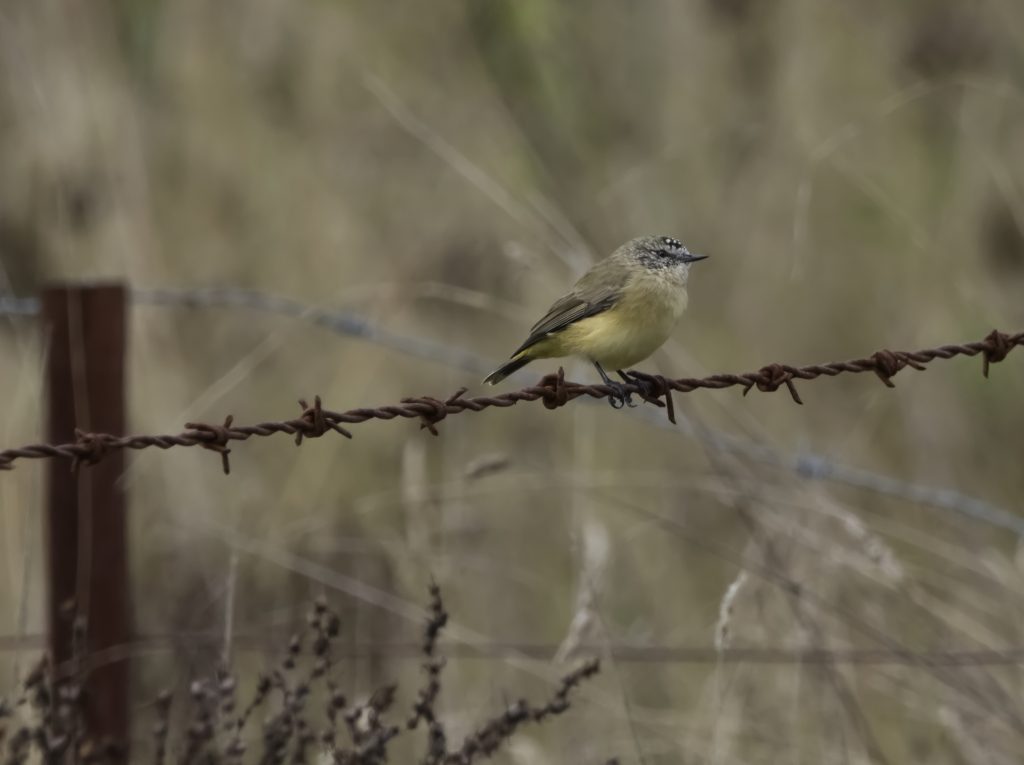
Where to find them: While I have seen other photographers find them in the mountains, the day I got this shot was actually the first time I had seen one. This photo was taken near Guyver Bridge in the Megalong Valley.
Silvereyes
(Zosterops lateralis)
It’s evident where the name for these tiny birds come from, with their unique ring surrounding the eye. It took me a while to get a good shot of them, like the Fairy-wrens they are fast and rarely stop still for long. They seem to like the same kind of environment as Fairy-wrens, as I will often see them nearby.
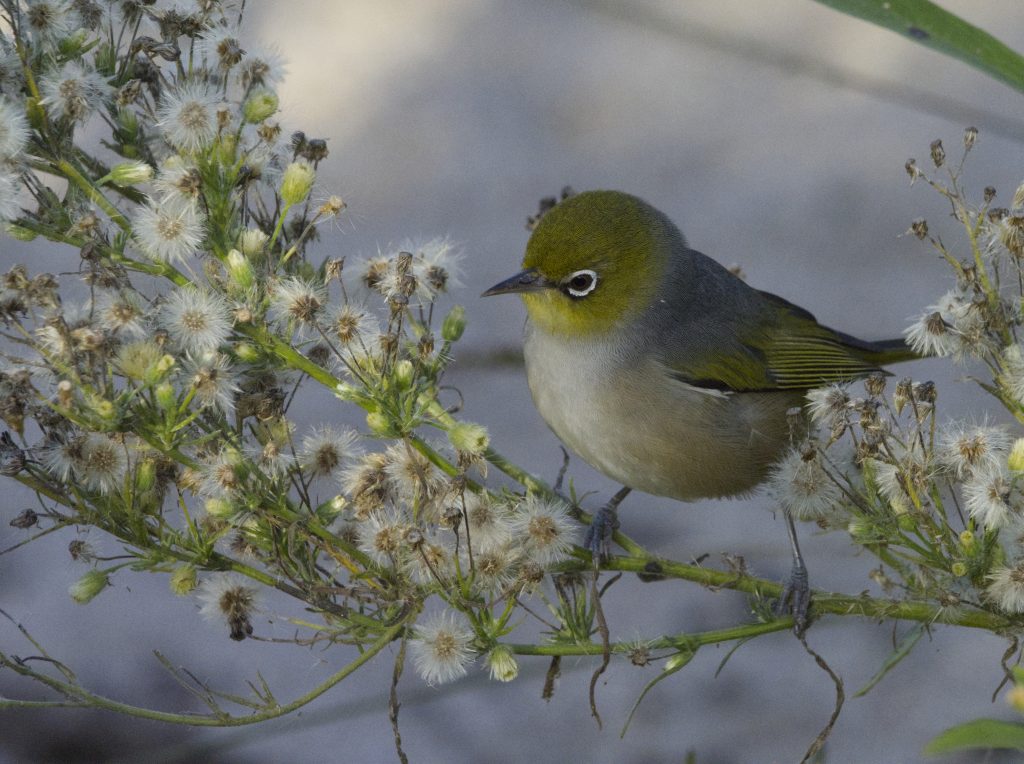
Where to find them: While I have seen them in a number of locations, including Emu Green Reserve, I have had the most luck capturing close shots of them at Guyver Bridge in the Megalong Valley, and near the river at Yarramundi Reserve where this photo was taken.
Red-Browed Finch
(Neochmia temporalis)
If you see a flash of red darting through the growth you might have caught a glimpse of one of these guys! An unmistakable species of tiny Australian native birds due to the red beak and prominent striping on the head. It is common to see these in a group feeding in the grass, and often near Superb Fairy-wrens. I have also seen them beside creeks on several occasions.
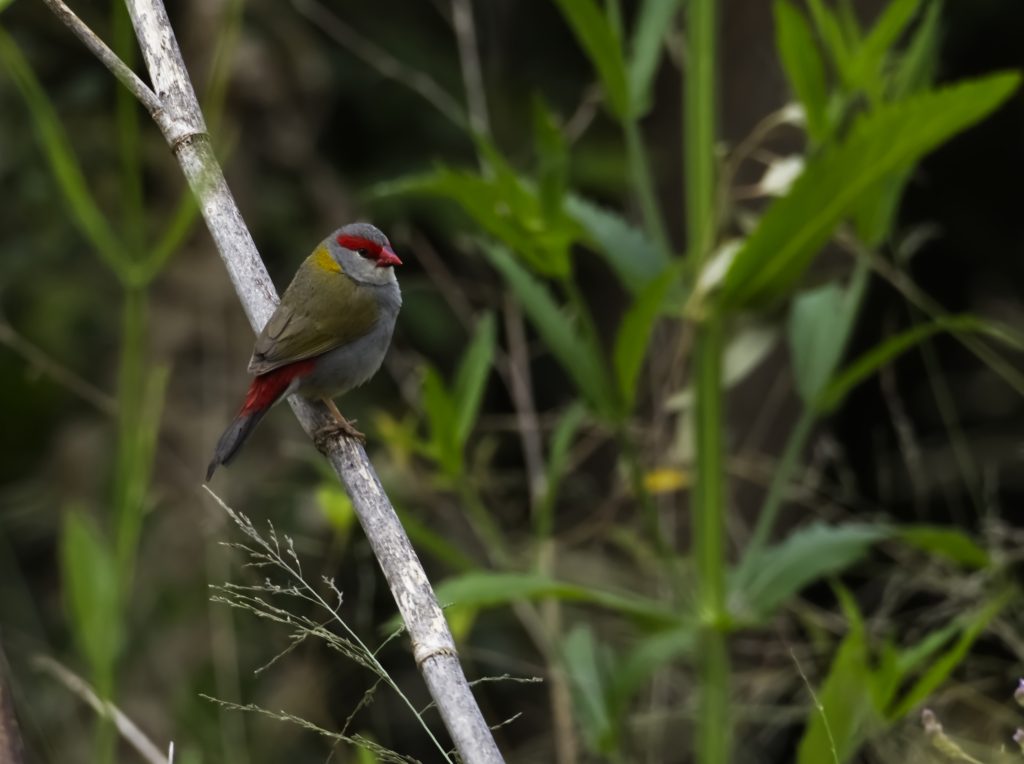
Where to find them: Another tiny bird which is reasonably common in the Blue Mountains, I’ve seen these at Yarramundi Reserve (the picnic area side), in the Megalong Valley, Minni Ha Ha Reserve and Emu Green Reserve, where this shot was captured.
I hope you enjoyed my images and a little insight into the tiny Australian native birds of the Blue Mountains!
If so please share!
